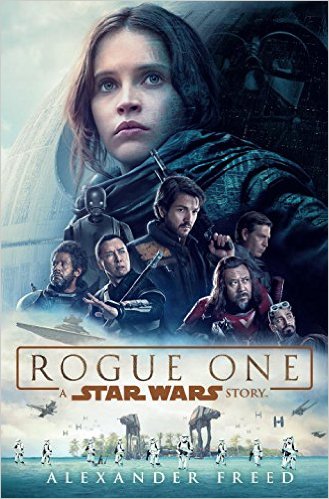Review via Yodasnews Contributor Jacob Burdis:
*Spoiler Alert — This post contains spoilers of Rogue One: A Star Wars Story film and novel*
The novelization of Rogue One: A Star Wars Story is a worthy read for any Star Wars fan. It tells the same story as the film with a level of nuance that enhances the story and enlivens the characters.
The novel follows the same chronology of the film, adding extra detail to many scenes and adding a few new scenes altogether. The dialogue roughly follows the film, with several additions and some minor alterations. One of the novelties in the novel is the addition of supplemental data, which describe conversations between imperial officers and other details that aren’t present in the film, but bring depth to the story, such as the details to Erso’s sabotage, bickering between Krennic and Tarkin, and the inner conflict within the hierarchy of the Rebel Alliance.
I watched the movie many times, and began to get a deep feel for significant, meaningful themes that fill the undercurrent of the story. But reading the novelization brought all of these themes to life in a way only the written word can do. I’ll outline a couple of the main themes that become incredibly evident through the novel.
Hope and Redemption
The theme of hope was abundant in the film, with Cassian’s and Jyn’s recurring line “rebellions are built on hope.” But the novel illuminates deeper meaning on this theme in the story. Each of the main characters undergoes a fundamental transformation, a redemption, because of their budding hope against a tyrannical, seemingly undefeatable threat. Jyn changes from an apathetic vagabond to the rebel hero who ultimately is responsible for securing the plans to the Death Star because of the hope that her father’s message instills in her. Boddhi Rook risks his life to defect to the rebellion in the hope that his message from Galen Erso can lead the rebellion to undo some of the wrongs he facilitated as an imperial cargo pilot on the Death Star project. Cassian Andor transforms from a ruthless assassin to a selfless hero, finding the hope to listen to his heart instead of blindly following orders. Even Baze Malbus rebounds from his perceived failure to protect the temple on Jedha by gaining hope in the mission to protect Jyn as she secures the Death Star plans. The motives and transformations of the characters was especially rewarding to explore in the novel.
“The strongest stars have hearts of kyber”
This was my favorite line from the film, because of its significance in meaning to the story. This line gained even more significance after reading the novel. Chirrut Îmwe spoke this line to Jyn after sensing the Kyber crystal on her necklace, and sensing her importance to the force. Taken literally, it gives more mystery and respect to the awe-inspiring kyber crystals, as revered as the force itself. Some have claimed that it is a prophecy of the Death Star itself, which is certainly a strong star with a heart of kyber. The deepest meaning for me is referring to Jyn, or “stardust” as her father called her who wears her mother’s kyber crystal on a necklace which hangs near her heart. Chirrut sensed her role in the galaxy and felt compelled to protect her. At one point the novel even depicts one of Jyn’s dreams where her mother tells her this same line, driving home its significance.
For those that want a good story with lots of action, this is a great read. For those who want a deeper dive into the character development of Jyn Erso, Cassian Andor, and their band of rebels, this is an excellent read. For those who want to better appreciate the true Star Wars Story about how anyone can overcome impossible odds through hope, this is a must read.
Click Here or the image below to pick this up via digital, audio or physical form. We would like to thank Del Rey/Penguin Random House for providing the review sample.

